Understanding and Managing Lateral Pelvic Tilt: Left vs. Right Pelvic Tilt
Table of Contents
What is a Lateral Pelvic Tilt?
Lateral pelvic tilt, also known as left or right pelvic tilt, is a condition characterized by an uneven alignment of the pelvis, where one side of the pelvis is higher or lower than the other. This tilt can lead to various musculoskeletal issues and discomfort in the lower back, hips, and legs.
Lateral pelvic tilt can result from a variety of factors, including posture habits, muscle imbalances, injury, or underlying medical conditions. Understanding the causes, symptoms, and treatment options for lateral pelvic tilt is crucial for individuals seeking relief from this condition and its associated discomfort.
In this introduction, we will explore the key aspects of lateral pelvic tilt and lay the foundation for a deeper understanding of its implications and management.
Definition of Lateral Pelvic Tilt
Lateral pelvic tilt, also known as hip tilt or pelvic obliquity, refers to an abnormal or uneven alignment of the pelvis, where one side of the pelvis is positioned higher or lower than the opposite side when viewed from the front or back. This condition results in an uneven positioning of the hip bones and can disrupt the body’s overall balance and posture.
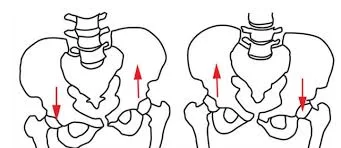
Left pelvic tilt
Right side of the pelvis elevated higher than left side is referred to as left pelvic tilt.
Right pelvic tilt
When the left side of the pelvis is lifted higher than the right side, this condition is referred to as a right pelvic tilt.
Anatomy of the Pelvis
The pelvis is a bony structure located at the base of the spine and is a critical part of the human skeletal system. It comprises several bones and joints that work together to provide support to the upper body, protect internal organs, and facilitate various movements. The main components of the pelvic structure include:
Hip Bones (Ilium, Ischium, and Pubis):
The hip bone, also known as the os coxae, is made up of these three bones. The ischium makes up the lower and posterior half, while the ilium is the wide, wing-shaped bone. The pubis is the front portion, and these bones connect together as adults at a location known as the acetabulum to create the hip joint socket.
Sacrum
At the back of the pelvis, the sacrum is a triangle bone made up of five fused vertebrae. It joins the pelvis to the spine.
Coccyx (Tailbone):
At the base of the sacrum is a little, triangular bone known as the coccyx. It symbolizes the human tail that still exists today.
Normal Pelvic Alignment
For the human body to stay stable and in balance, proper pelvic alignment is crucial. The hip bones should be level and symmetrical, and the pelvis should be in a fairly neutral posture. Essential components of healthy pelvic alignment include:
Normal Level Hips
The hip bones should be parallel to the ground and the same height when viewed from the front or the back. This demonstrates the correct balance and alignment of the two sides of the pelvis.
When viewed from the side, the pelvis should have a modest anterior (forward) inclination. This tilt enables optimal weight distribution and aids in preserving the spine’s natural curve.
Posterior Pelvic Tilt
A posterior pelvic tilt includes the pelvis rotating posteriorly around stationary femurs in a short-arc, closed-chain motion of the hip.
Slight Lateral Tilt
Due to possible modest anatomical variances between the left and right sides of each person, a very slight lateral tilt (to the left or right) is normal. Significant lateral pelvic tilt, however, can cause discomfort and postural problems.
Role of Pelvic Alignment in Overall Posture
The position of the pelvis is very important for both general posture and body mechanics. How pelvic alignment impacts posture is as follows:
Spinal Alignment: The pelvis acts as the spine’s supporting structure. The natural curvature of the spine, such as the thoracic (upper back) kyphosis and the lumbar (lower back) lordosis, are preserved with proper pelvic alignment. Back discomfort and spinal problems are less likely as a result of this position.
Balance: A level and well placed pelvis helps with stability and balance. By ensuring that the body’s weight is distributed equally across the legs, it lowers the possibility of falls and accidents.
Muscle Function: Ideal muscle function is encouraged by proper pelvic position. The muscles that surround the pelvis, spine, and hips can function effectively when the pelvis is aligned, which lessens tension and tiredness.
Pain management: Poor pelvic alignment can cause a number of musculoskeletal problems, such as leg pain, hip pain, and lower back pain. By maintaining good pelvic alignment, these issues can be avoided.
In conclusion, the pelvis is an important bone structure that bears the weight of the body, protects vital organs, and affects posture in general. Maintaining a balanced and healthy posture is crucial for lowering the risk of pain and discomfort. This is made possible by normal pelvic alignment.
Causes of Lateral Pelvic Tilt
Hip tilt or pelvic obliquity, both terms for lateral pelvic tilt, can be caused by a number of anatomical, biomechanical, and lifestyle-related problems. The following are some typical reasons for lateral pelvic tilt:
Bad Posture Habits
Over time, lateral pelvic tilt can be caused by poor posture, especially while sitting or standing with an uneven weight distribution on one leg. The pelvis may tilt as a result of slouching or leaning on one leg.
Muscular imbalances
A major contributing factor to lateral pelvic tilt is muscle imbalances in the hip and pelvis region. An unequal alignment might result from some muscles on one side of the pelvis being stronger or tighter than those on the other. Typical muscular imbalances consist of:
- Adductors
- Gluteus medius
- Obliques
- Quadratus lumborum (QL)
- Tensor fascia lata (TFL)
An imbalance between the Quadratus Lumborum, Adductors, and Glute Medius muscle can cause a lateral pelvic tilt.
Other muscles involved are the oblique and Tensor fascia latae
Due to relatively weak glute medius, tight quadratus lumborum, and tight adductors, the pelvis will HIP HIKE to the affected side.
Due to relatively tight glute medius, weak quadratus lumborum, and weak/elongated adductors, the pelvis will HIP DROP to one side.
Oblique Muscles: The oblique muscles, which extend the abdomen diagonally and attach to the pelvis, can also be out of balance and cause lateral tilt.
Leg Length Discrepancy
A lateral pelvic tilt will occur if one leg is physically longer than the other side.
Typically, the side of the longer leg will have a higher hip.
How long your legs should be is determined by:
Lay down on your back.
From the ASIS to the medial malleolus, measure the distance.
Effort both sides.
Results: You may have a leg length disparity if these lengths differ significantly between the legs.
Scoliosis
Scoliosis patients who have an abnormal curvature of the spine may also experience lateral pelvic tilt as a side effect. The pelvic alignment may be impacted by the curvature of the spine.
Injury or Trauma
A past pelvic, hip, or lower back injury or trauma might alter natural pelvic alignment and cause lateral tilt. This syndrome may be caused by fractures, dislocations, or soft tissue injuries.
Neuromuscular Conditions
Pelvic tilt can occur as a result of some neuromuscular conditions that compromise muscle control, such as cerebral palsy and muscular dystrophy.
A laterally tilted pelvis may be the result of any disorder that affects the nerves that supply the control of the pelvic musculature.
Degenerative Conditions
The alignment of the pelvis can be impacted over time by degenerative disorders of the spine and joints, such as osteoarthritis. modifications in pelvic alignment might occur as a result of compensatory modifications as joint integrity declines.
Structural Abnormalities
Rarely, structural issues with the pelvic bones or joints can cause lateral pelvic tilt. These could be acquired or congenital.
Pregnancy
The body goes through a lot of changes while pregnant, including hormone changes and ligament loosening in the pelvic area. These modifications may result in lateral pelvic tilt and altered pelvic alignment.
Symptoms of Lateral Pelvic Tilt
The intensity and presentation of lateral pelvic tilt symptoms, also known as hip tilt or pelvic obliquity, may vary from person to person. The most common cause of these symptoms is a pelvic malalignment, when one hip is higher or lower than the other. The following are typical signs of lateral pelvic tilt:
- Uneven Leg Length: Even though there is no actual variation in leg length, one leg may appear longer than the other due to the lateral tilt. When standing or moving, this can be seen visibly.
- Lower back pain is frequently caused by lateral pelvic tilt, especially on the side with the higher hip. The lower back muscles may get overworked and the alignment of the spine may be impacted by the unequal weight distribution.
- Hip Pain: When walking or performing other tasks that require hip mobility, discomfort or pain may be felt in the lower hip joint.
- Leg Pain: Due to a change in weight distribution and muscular imbalances, pain, discomfort, or weariness may be felt in the leg next to the lower hip.
- Gait Abnormalities: Uneven gait can result from lateral pelvic tilt, which can alter how a person walks. This could lead to unequal stride length and a different walking stance.
- Postural Changes: People with lateral pelvic tilt may show obvious postural modifications. To make up for the pelvic misalignment, these adjustments may involve leaning to one side, having one shoulder higher than the other, or tilting the torso.
- Muscular Imbalances: The tilt may result in muscular imbalances in the pelvis, hips, and lower back, which may produce stiffness, numbness, or spasms there.
- Increased Risk of Injuries: The lateral pelvic tilt-induced uneven weight distribution and changed biomechanics may raise the risk of injuries, particularly to the lower back, hips, and knees.
- Discomfort While Sitting: Individuals with lateral pelvic tilt may feel pain or discomfort when sitting for long periods of time, as the uneven pressure on the pelvis can aggravate pre-existing conditions.
- Uneven Shoulder Heights: When one hip is higher than the other, the shoulder on that side will typically be lower than the other.
- Internal Rotation of the Leg: A lateral pelvic tilt causes the leg bones to internally rotate most frequently. The possibility that the lateral pelvic tilt may really be the cause, rather than the consequence, of the internal rotation of the leg should not be discounted. If such is the case, the issue begins at the foot all the way at the bottom. A pronated foot typically has a flat foot or a collapsed arch, and the ankle is rolled inward. The shin bones and the femur rotate inward and the hip drops when one foot pronates.
- Reduced Range of Motion: Lateral pelvic tilt can restrict a person’s hip and lower back range of motion, making it more difficult for them to engage in certain exercises and activities.
- Other Symptoms: Severe or long-lasting occurrences of left or right pelvic tilt may result in muscular tightness and low back pain, although mild to moderate cases typically do not cause any visible symptoms.
A lateral pelvic tilt may result in more severe medical issues, such as the following if left untreated: A lateral pelvic tilt may result in disc degeneration because the lumbothoracic spine is distorted. According to one study, regardless of age or gender, people with a high degree of pelvic tilt also had a higher prevalence of disc degeneration in the L4 to L5 portion of the lumbar spine. A lateral pelvic tilt may cause the sacrum to be positioned asymmetrically in relation to the ilia, or “wings,” of the pelvic girdle, which may cause sacroiliac joint pain. Sacroiliac joint discomfort may be caused by this asymmetries.
Diagnosis
Physical Examination
Through a comprehensive physical exam, a healthcare practitioner, such as a doctor, orthopedic specialist, or physical therapist, can identify lateral pelvic tilt. They normally do the following throughout the examination:
- Observation: The medical professional will observe you to evaluate your posture and body alignment. They will be on the lookout for any spinal, shoulder, hip, or pelvic asymmetry.
- Gait analysis: They may watch how you walk to look for any irregularities or compensatory motions brought on by the pelvic tilt.
- Palpation: The healthcare professional can find painful spots, muscular imbalances, or anomalies by gently palpating the pelvic bones, spine, and surrounding muscles.
- Assessment of Range of Motion: To determine mobility and any constraints, range of motion assessments of the hips, lower back, and pelvis may be performed.
- Neurological Assessment: To rule out any underlying nerve-related problems, a neurological examination may occasionally be carried out.
Imaging and Diagnostic Tests:
To confirm the diagnosis of lateral pelvic tilt and determine its severity, healthcare providers may do imaging and diagnostic testing in addition to a physical examination. These tests could consist of:
- X-rays: Pelvic and spinal X-ray imaging can show bone structures clearly as well as any anomalies in the alignment of the pelvis and spine. X-rays can be used to detect any underlying structural problems and assess the severity of the lateral tilt.
- MRI (Magnetic Resonance Imaging): A thorough view of the soft tissues, muscles, ligaments, and discs of the pelvic and lumbar spine can be obtained using an MRI (Magnetic Resonance Imaging) scan. The identification of muscle imbalances, tissue injury, or other disorders causing the pelvic tilt may be assisted by this.
- CT (Computerized Tomography) Scan: CT scans can be performed to assess bone structures and pelvic alignment in greater detail. Cross-sectional images of the pelvis and spine can be obtained with this imaging technique.
- Electromyography (EMG): EMG studies may be performed to evaluate the electrical activity of muscles and nerves in the pelvic region when muscle function or nerve involvement is suspected.
Differential Diagnosis (Distinguishing from Other Conditions):
It’s important to distinguish between lateral pelvic tilt and other medical diseases that have similar symptoms or postural problems. Differential diagnosis involves excluding other possible reasons, including:
- Scoliosis: A spine curvature can cause postural issues that may resemble lateral pelvic tilt.
- Leg Length Discrepancy: A tilted pelvis can be caused by a discrepancy in leg length. This condition requires a separate assessment.
- Musculoskeletal Disorders: Painful conditions that might alter pelvic alignment include hip osteoarthritis and sacroiliac joint dysfunction.
- Neurological disorders: Issues like neuropathy or radiculopathy may result in postural changes or muscle weakness.
- Anatomical variations: Some people may naturally have asymmetrical hips or pelvises without encountering serious functional problems.
Differential diagnosis makes sure that the right underlying cause of the postural problem is found, enabling the development of more specialized and successful treatment plans. A healthcare practitioner will establish an accurate diagnosis and create a suitable treatment plan using a mix of physical examination findings and diagnostic tests.
Treatment of Lateral Pelvic Tilt
The underlying reason and the severity of the condition are the main factors that determine how to treat lateral pelvic tilt, commonly referred to as hip tilt or pelvic obliquity. The following are some possible treatment methods:
Physical Therapy Treatment
In order to effectively cure lateral pelvic tilt (also known as hip tilt or pelvic obliquity), physiotherapy is essential. To address the underlying reasons, relieve symptoms, and enhance pelvic alignment, a physiotherapist can create a specialized treatment plan for each patient. The following are some typical components of physiotherapy for lateral pelvic tilt:
Stretching Exercises:
To aid in the restoration of balance, a physical therapist can create a specialized stretching program to address tight muscles, particularly in the hip flexors and adductors.
Strengthening Exercises:
To support the pelvis and promote alignment, certain workouts are recommended to strengthen the weaker muscles, such as the glutes and core muscles.
Postural Training:
It’s important to learn good body mechanics and posture. This involves being conscious of your posture and using it throughout your everyday tasks.
Modalities for Pain Relief:
When there is a pain-related inflammation, physiotherapists can use modalities including heat therapy, cold therapy, ultrasound, or electrical stimulation to treat the symptoms.
Manual Therapy:
For people with pelvic misalignments, chiropractic adjustments or osteopathic manipulations can be helpful, especially if they are linked to joint limitations or subluxations.
Gait Evaluation:
Gait analysis, which examines a person’s walking pattern, can be used to spot irregularities and compensatory movements associated with the lateral pelvic tilt. The physiotherapist could offer suggestions for bettering walking forms.
Biomechanical Evaluation:
A biomechanical evaluation analyzes the body’s overall motion to find any mechanical problems that may be causing the pelvic tilt. The physiotherapist may suggest orthotic devices or footwear alterations based on the assessment.
Orthotics:
Leg length discrepancies can be addressed with the assistance of custom-made shoe inserts, which also support and encourage a more balanced pelvis.
Traction and Decompression:
To relieve pressure on the spine and pelvis, mechanical traction or decompression therapy may be suggested in specific circumstances.
Medication:
Non-steroidal anti-inflammatory medicines (NSAIDs) or over-the-counter painkillers can assist manage the discomfort and inflammation caused by lateral pelvic tilt. However, these are often employed to treat symptoms rather than the underlying problem.
Lifestyle Modifications:
Modifying routines and behaviors, such as maintaining proper posture, avoiding prolonged sitting, and utilizing ergonomic furniture and tools, to prevent aggravating the problem.
Assistive Devices:
If the tilt is caused by a difference in leg length or other mobility limitations, the use of assistive equipment like crutches or canes may be required.
Weight Management:
For those who are overweight, decreasing extra weight can assist lessen pelvic strain and relieve discomfort.
Surgical Intervention:
Surgery might be an option in cases where the lateral pelvic tilt is caused by serious structural problems. Usually a final option, this is only used in the most severe circumstances.
Corrective Shoe Lifts:
In order to level the pelvis and ease discomfort, shoe lifts may be advised if leg length difference is a substantial contributing factor.
Lifestyle and Ergonomic Adjustments:
Adapting daily routines, workplaces, and sitting arrangements to encourage healthy posture and lessen the chance of the pelvic tilt getting worse.
Postural Education:
For long-term treatment, learning good posture and body mechanics is crucial. People who are educated on how to keep their alignment optimal while engaging in different activities would profit.
Depending on the condition and demands of the individual, the treatment strategy may change. A full assessment and individualized treatment recommendations should be obtained by speaking with a healthcare expert, such as a physical therapist or orthopedic specialist. Achieving effective management of lateral pelvic tilt and avoiding related problems requires early intervention and commitment to the recommended treatment plan.
Exercise for Lateral Pelvic Tilt
Exercises can be beneficial as part of a lateral pelvic tilt treatment plan, especially if muscle imbalances are a factor in the condition. Here are some exercises that could assist correct pelvic alignment and lessen lateral pelvic tilt symptoms.
Hip Flexor Stretch:

Kneel on the ground with one knee, with the other foot in front and the knee bent at a 90-degree angle.
When you begin to feel a stretch at the front of your hip on the kneeling leg, shift your weight forward while maintaining a straight back.
Repeat on the other side while holding the stretch for 20 to 30 seconds. Do two or three sets.
Hamstring Stretch:

With your legs outstretched, Long Sitting Position on the floor.
Keeping your back straight, extend your hand forward toward your toes.
Use a cloth or strap to help if you can’t reach your toes.
1-2 repetitions of holding the stretch for 20–30 seconds each.
Hip Adductor Stretch:
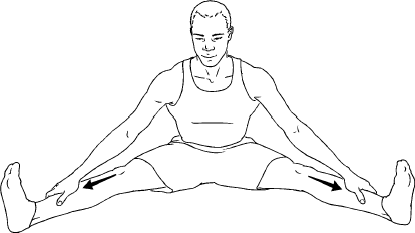
Your legs should be extended and as far apart as they can be while still being comfortable.
Maintaining a straight back, lean to one side while stretching your hand toward your foot.
Repeat on the other side while holding the stretch for 20 to 30 seconds. Do two or three sets.
Quadratus Lumborum/Obliques (Right side) Stretch:
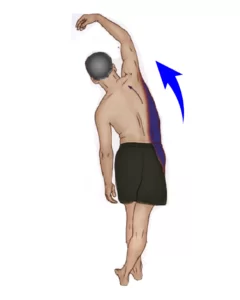
Start by spreading your bases apart and extending your left foot to the side.
Start flexing to the left side with your arms extended.
Attempt to extend your upper arm as far to the left as you can.
Maintain a straight line with left leg.
Avoid rotating your body.
Legs should be rather straight.
Attempt to feel a stretch on your right side.
Hold for a minute.
Tensor fascia latae (Left side) Stretch
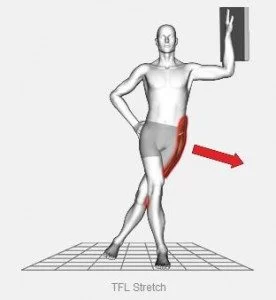
Lunge forward, placing your left leg behind you.
Uphold your narrow attitude.
Keep your feet parallel to one another.
Squat forward.
Back-rotate your pelvis.
Lean to your right and tell yourself to “tuck your tailbone underneath you.”
The objective is to feel a stretch on the left leg’s upper side.
Hold for one minute.
Glute Bridge:
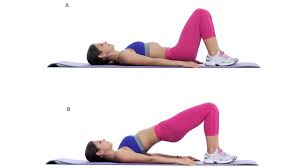
Legs bent and flat on the floor, hip-width apart, as you lay on your back.
Create a straight line from your shoulders to your knees by squeezing your glutes and lifting your hips upward.
Hold and, bring your hips back down. 3-5 sets of 10-15 repetitions should be done.
Clamshells:
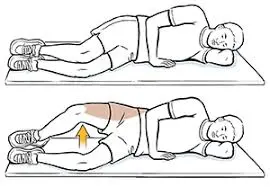
Lay on your side with your feet together and your knees bent at a 90-degree angle.
Lift your upper knee as high as you can without shifting your pelvis while keeping your feet together.
Repeat by bringing the knee back down. On each side, complete 2-3 sets of 10-15 repetitions.
Side Plank:
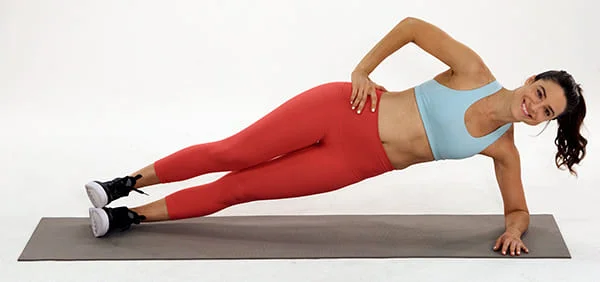
Lie on your side with your knees bent at a 90-degree angle and your feet together.
To draw a straight line from your head to your heels, lift your hips off the floor.
Hold the position for 15–30 seconds before increasing the time. Execute on all sides.
Quadruped Hip Abduction:
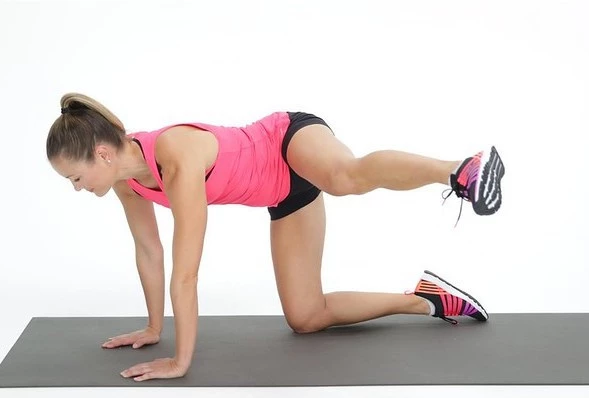
Start in the quadruple position, on your hands and knees.
Maintaining the knee at a 90-degree angle, lift one leg out to the side.
Repeat by lowering the leg. On each side, complete 2-3 sets of 10-15 repetitions.
Hip hitch (Right side on step) (Standing)
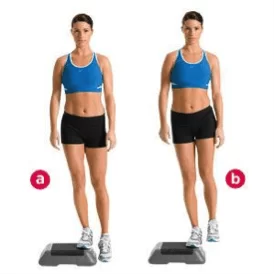
Place your right leg on the edge of a step while you stand sideways.
When performing the all-over workout, keep your stance leg relatively straight.
Start by lowering your left leg as much as you can.
over: As high as you can, raise your left hip.
Repeat twenty times.
Progress: Go slower
Wall Slides
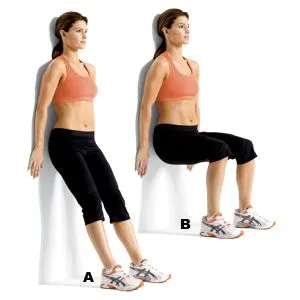
Place your feet about 6 inches from the wall while keeping your back against the wall.
Keep your elbows and wrists in contact with the wall as you raise your arms upward.
Keep your hands in contact with the wall as you slowly slide your arms up and down. By enhancing shoulder and upper back mobility, this exercise can help with pelvic alignment.
How to Prevent Lateral Pelvic Tilt?
Preventing lateral pelvic tilt, or hip tilt, involves a combination of maintaining good posture, addressing muscle imbalances, and making healthy lifestyle choices.
The following recommendations and techniques can aid in preventing lateral pelvic tilt:
Maintain Good Posture:
Be conscious of your posture throughout the day, whether sitting, standing, or walking.
Maintain level hips and a neutral pelvic position.
Avoid spending prolonged periods of time standing or sitting in situations that promote bad posture or uneven strain on the pelvis.
Stay Active and Exercise Regularly:
Exercise in a balanced manner by performing both body-strengthening and stretching routines.
To maintain pelvic stability, concentrate on workouts that strengthen your core and hips.
Stretch and Mobilize:
Include frequent stretching exercises to keep your muscles flexible, particularly your adductors, hamstrings, and hip flexors.
To ensure healthy hip and spine range of motion, perform mobility exercises.
Correct Muscle Imbalances:
By performing certain exercises and stretches, you can correct any muscle imbalances in the hip and pelvic area.
For a customized program to fix imbalances, speak with a physical therapist or fitness expert.
Use Ergonomic Equipment:
Invest in ergonomic desks and chairs if you have a sedentary job to encourage proper posture and lower the chance of pelvic misalignment.
To keep your chair and computer screen in optimum alignment, adjust their heights.
Avoid Prolonged Cross-Legged Sitting:
Pelvic tilt can be increased by sitting cross-legged or with one leg tucked under the other for long periods of time. Alternate positions frequently.
Lift and Carry Objects Safely:
Use the right lifting techniques, such as bending at the knees and hips rather than the waist, while moving large goods.
Carrying large bags on one side of your body should be avoided because it can lead to muscle imbalances and poor pelvic alignment.
Wear Supportive Footwear:
In order to preserve healthy lower limb alignment, choose shoes with supportive arch support and cushioning.
Maintain a Healthy Weight:
The pelvis and lower back may experience increased stress due to excess weight. To keep normal weight through a low-calorie diet and exercise.
Address Underlying Medical Conditions:
Consult with a healthcare provider to handle any disorders like scoliosis or leg length discrepancy since they can interfere with pelvic alignment.
Stay Hydrated:
Adequate hydration promotes the health of the muscles and joints, reducing stiffness and muscular imbalances.
Listen to Your Body:
Pay close attention to any indications of pain or discomfort in the lower back, hips, or pelvis. Immediately seek medical or physical therapy help if you face ongoing problems.
Regular Check-ups:
Make regular appointments with a physical therapist or other healthcare professional to have your posture and musculoskeletal health evaluated.
Remember that everyone’s body is unique and that circumstances specific to each person might cause pelvic tilt. As a result, it’s critical to adopt a customized strategy for prevention and, if necessary, get the advice of a healthcare provider or physical therapist for recommendations tailored to your unique needs and circumstances.
Conclusion
In conclusion, lateral pelvic tilt, characterized by an uneven alignment of the pelvis, can lead to various discomforts and postural issues. However, it can often be prevented and managed through a combination of maintaining good posture, addressing muscle imbalances, staying active, and making ergonomic and lifestyle adjustments. Early intervention and a proactive approach to pelvic health can help individuals maintain proper alignment and reduce the risk of associated musculoskeletal problems.
FAQs
We’ll examine two of the most frequent causes of lateral pelvic tilting: structural issues caused by an imbalance in leg length and functional abnormalities arising from muscular tension. If there is unilateral hypertonicity or spasm in the low back muscles, the pelvis may tilt to the side.
To fix a lateral tilted pelvis, you should:
Identify the underlying reason, which may be due to structural problems or muscle imbalances.
Create a customized workout and stretching regimen with the help of a physical therapist or other healthcare professional to address imbalances.
Use ergonomic practices and proper posture when performing daily tasks.
If a leg length difference is a factor, take into account orthotic devices or footwear modifications.
Follow professional advice to address any underlying medical disorders or structural problems.
Maintain consistency with your workout routine and lifestyle changes for long-term pelvic alignment.
To find lateral pelvic tilt:
Pose yourself in a relaxed, upright manner.
Check to see whether your shoulders and pelvis seem unequal, or if one of your hips seems higher than the other.
Check the lower back or pelvis on one side for any pain, tightness, or discomfort.
If you suspect lateral pelvic tilt, speak with a medical practitioner or physical therapist for a comprehensive evaluation.
Yes, there are numerous ways to treat pelvic tilt, including physical therapy, exercise, and dietary changes, and these can frequently fix or greatly improve the condition. The method used to repair the pelvic tilt relies on what caused it in the first place. Working with a medical practitioner or physical therapist who can evaluate your unique situation, provide a personalized treatment plan, and lead you through the proper exercises and techniques to correct pelvic alignment is crucial.
According to some studies, up to 85% of men and 75% of women who do not exhibit any symptoms have an anterior pelvic tilt. Excessive sitting or a lack of exercise might lead to anterior pelvic tilt. It may cause various symptoms and has an impact on posture and spine shape.
Lateral pelvic tilt, or hip tilt, can vary in severity, and whether it is considered serious depends on several factors, including the degree of tilt, the underlying causes, and the presence of associated symptoms. In some individuals, a minor pelvic tilt may not cause significant issues or discomfort and may not be considered serious.

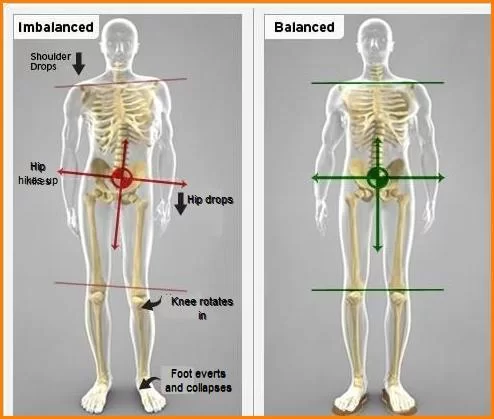
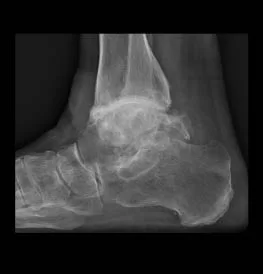
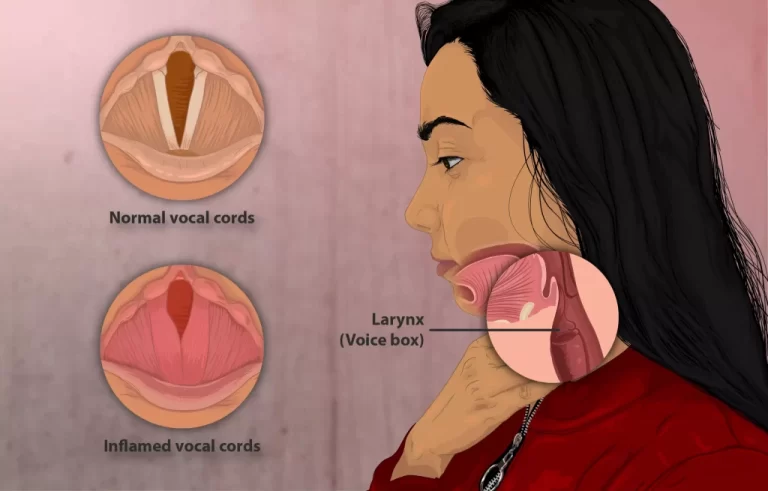

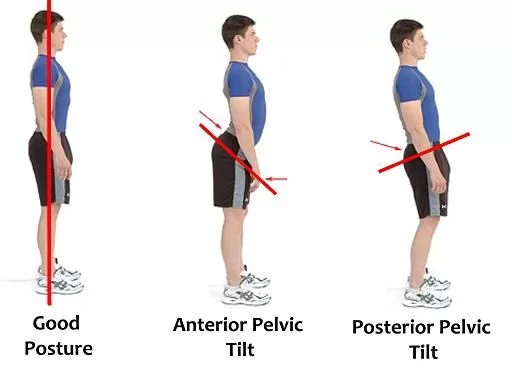
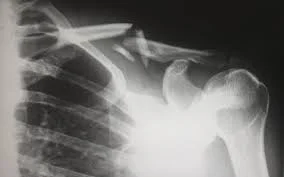
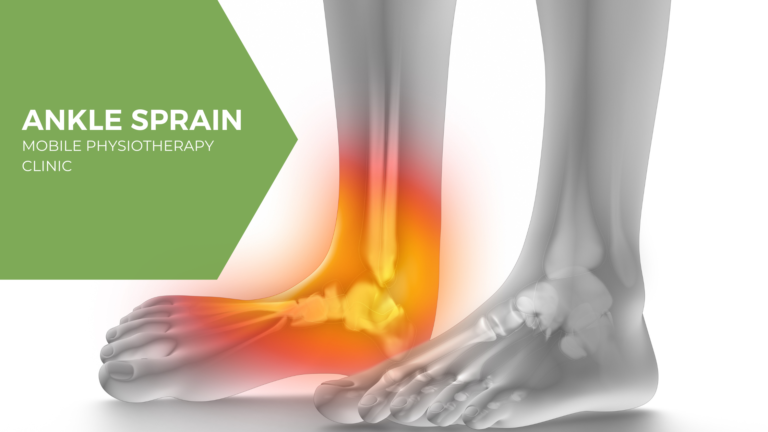
2 Comments